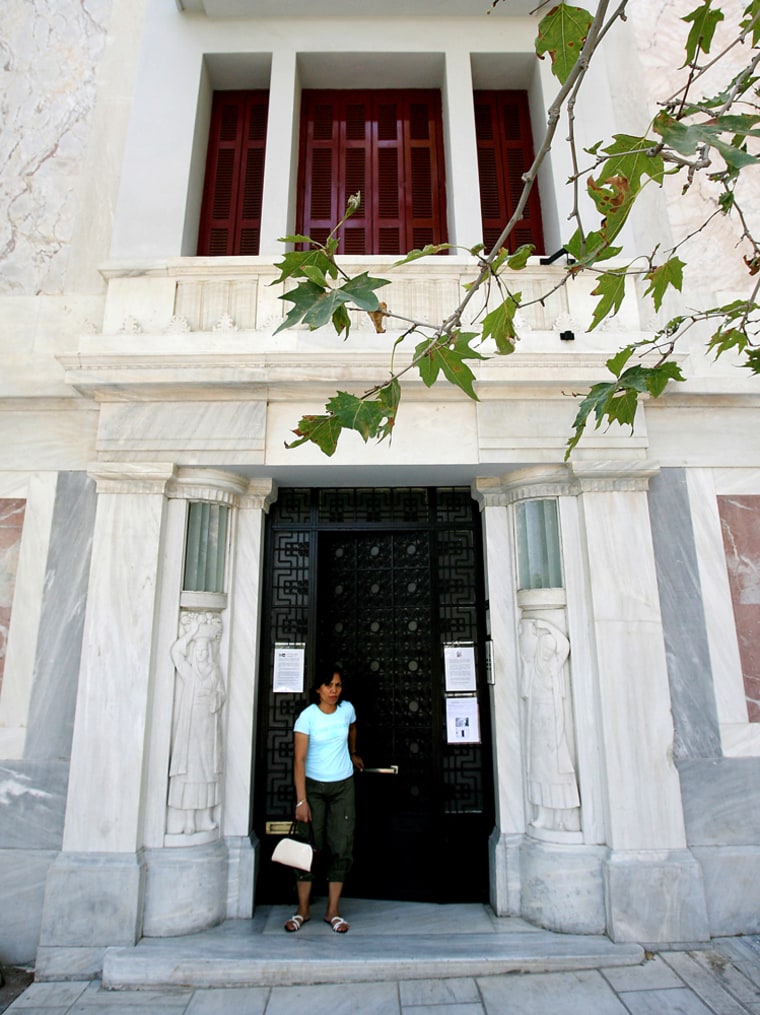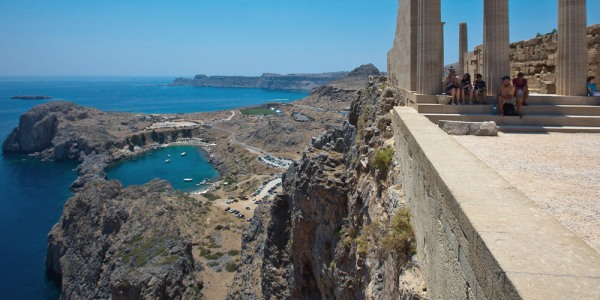Greece's Culture Minister has angered architects and conservationists by clearing the way for demolition of a protected architectural gem in central Athens to improve the view from the landmark new Acropolis Museum.
George Voulgarakis' decision, signed Aug. 30 but made public Wednesday, revoked state protection for the ornate art deco building "to allow an unimpeded view of the Acropolis (from the new museum)."
It added that demolition of the 1930 building — and of an adjacent house owned by Oscar-winning composer Vangelis Papathanassiou — would allow the plot to be excavated "to reveal antiquities whose existence is considered highly likely."
But residents, who have launched an international e-mail campaign to save the structure, vowed Wednesday to challenge the decision in court.
Architect Nikos Rousseas, whose office is in the four-story building, said he was "amazed" at Voulgarakis' decision, which he said came "very unexpectedly," at a time when public attention was focused on the devastating forest fires that ravaged southern Greece and killed more than 65 people.
The dispute, which has pitted architects and conservationists against archaeologists and Culture Minister officials, is overshadowing the opening of the new $179 million museum, where — despite London's standing refusal — Greece still hopes to eventually display the British Museum's collection of sculptures from the Parthenon.
The Acropolis Museum is set for inauguration in early 2008, after a delay of more than two decades.
The two adjacent buildings on Dionyssiou Areopagitou Street — which stand between the new glass-and-concrete museum and the ancient citadel — will not be automatically demolished, as they are both still listed as protected by the Ministry of Public Works. But Voulgarakis' decision is expected to ease the way for that listing to be revoked too.
But residents have not given up hope.
"We are certain that, with broad popular support and the verdict of our justice system, (the art deco building) will continue to embellish our city for many years to come," residents said in a statement on a blog devoted to the building's salvation.
Culture Ministry officials were not immediately available for comment Thursday.
The pink-marble faced building, decorated with white marble sculptures and mosaics themed on the ancient Greek myths, stands some 300 meters (yards) from the Acropolis, on a carefully landscaped pedestrian street facing the ancient citadel's southern slopes.
It was designed by Greek architect Vassilis Kouremenos, a Paris-trained friend of Pablo Picasso.
Rousseas said it was ironic that a minister of culture should revoke the structure's protected status — especially as the original listing was signed in 1988 by the driving force behind the new museum, the late actress and former Culture Minister Melina Mercouri.
"Melina Mercouri, the brains behind the new museum, listed the building as a monument and a work of art," he said.
Rousseas argued that the art deco edifice served as a link between ancient and modern, while softening the impact of the 20,000-sq. meter (215,000-sq. foot) museum on its surroundings.
Slideshow 23 photos
A European tour
"You have hundreds of people both in Greece and all over the world who ... appreciate the coexistence of early 20th century architecture and this urban environment opposite the rock of the Acropolis and the Parthenon," he said.
"I do not believe (the art deco building) is a problem to the functioning of the museum," Rousseas added. "The mere existence of this building screens off the otherwise huge, monumental volume of the 21st century museum.
The two-story museum, designed by U.S.-based architect Bernard Tschumi in collaboration with Greece's Michael Photiades, will be capped by a glass hall containing some Parthenon sculptures. The glass walls will allow visitors a direct view of the ancient temple — over the roofs of Areopagitou 17 and 19.

